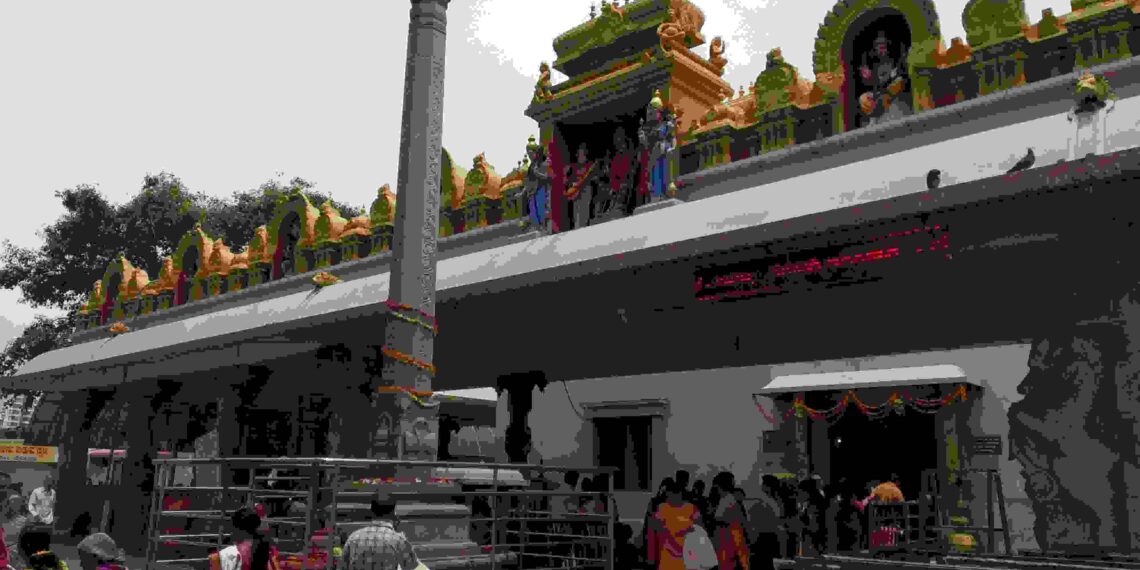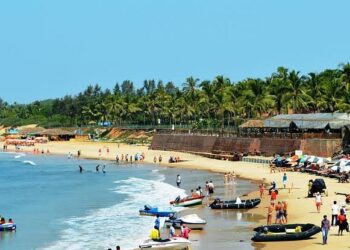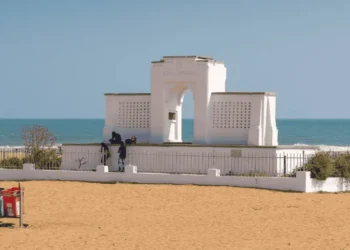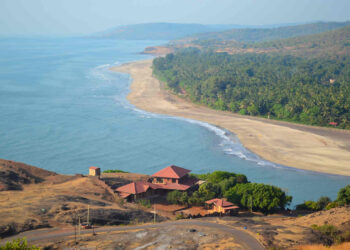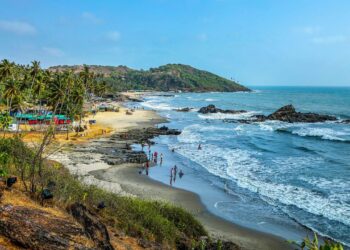The Banashankari Temple, located in Cholachagudda, 5 km from Badami in Karnataka’s Bagalkot district, is a revered temple for Goddess Banashankari, a form of Parvati. Nestled in the lush Tilakaaranya forest, this 7th-century shrine, also known as Shakambhari, faces the Haridra Tirtha pond and draws thousands of devotees across India. Spanning about 1 acre, its Dravidian architecture, the temple lies 495 km from Bengaluru and is a gem of Karnataka culture.
Legend of the Temple
The Banashankari Temple legends are one of a kind. One key tale from the Skanda Purana tells of Durgamasura, a demon who brought fear to this land. The people prayed for relief, and the Goddess Shakambhari through a yagna’s holy fire descended to Earth. She fought fiercely and defeated the demon, bringing calm to the area. The forests nearby, rich with coconut, banana, and betel, fed people during tough times, so she’s called Shakambhari, meaning “giver of greens.”Local people believe praying here brings her care and strength, as she still guards the land.
Another story speaks of a Chalukya king who saw Banashankari in a dream, urging him to build her temple. He followed her words, and his kingdom grew strong, making her a beloved goddess in the kingdom.
History of the Banashankari Temple
The temple’s roots go back to the 7th century, built by the Kalyani Chalukya kings, who saw Banashankari as their family goddess. A stone writing says King Jagadekamalla I set her idol here in 630 CE, and a 1019 CE Kannada pillar mentions Rashtrakuta king Bhimadeva, hinting at older worship. Old records suggest the temple might be even older, tied to Rashtrakuta or local ways. The temple we see was fixed in 1750 by a Maratha leader, Parusharam Agale, mixing Chalukya, Vijayanagara, and Maratha styles.
By the 8th century, the temple was a busy spot, with weavers, farmers, and traders keeping it going, old papers show. The Vijayanagara kings, from the 14th to 16th centuries, added to its beauty, and the Adil Shahis and Marathas helped too. The British took over in the 1800s, and now Karnataka’s HR&CE Board runs it. The temple’s past lives in Kannada books, like Triveni’s Kusuma Bale, and its role for the Devanga weaver community, who pray to Banashankari.
The temple is a big part of Karnataka’s ways. Songs by saints like Basavanna, tied to Shakti love, keep the Bhakti spirit strong. Its history, from Chalukya days to today, ties it to Badami’s Cave Temples and other old places, showing Karnataka’s faith and art.
Architecture of the Temple
The Banashankari Temple is Dravidian style, with Vijayanagara and Islamic touches, inside tall stone walls. It has a front porch, an inner hall, and a sanctum with a tower above. The sanctum holds a black stone Banashankari idol, sitting on a lioness, stepping on a demon. Her eight arms hold a trident, drum, skull cup, bell, book, sword, shield, and a demon’s head, looking strong. The idol, placed by Jagadekamalla I, is the temple’s heart.
In front is the Haridra Tirtha, a 360-foot square pond, with stone paths for walking around. A three-story lamp tower, made by a warrior named Ketimayya, stands by the pond, and lamp pillars at the gate feel like Kerala temples. Kannada writings on pillars tell the temple’s story. The mix of old styles shows Karnataka’s past, fitting with Badami’s caves nearby. The forest setting, with red hills around, feels old and peaceful.
Festivals and Rituals
The temple comes alive during the Banashankari Jatre, a three-week festival in January or February, starting on Pushya masa’s eighth day and ending with the Rath Yatra on Paush Purnima. The goddess’s idol rides a chariot through Cholachagudda, with thousands from Karnataka and Maharashtra joining. The fair has folk dances like Dollu Kunitha, Carnatic songs, plays, and a boat festival, mixing faith and fun. People also come for Navratri and Dussehra prayers. Daily rituals, from 6 AM to 1 PM and 3 PM to 9 PM (free to enter), offer flowers and jowar roti, with special Rahukala prayers on Tuesdays, Fridays, and Sundays to ease bad times.
Festivals keep Karnataka’s old ways going. Songs with veenas and drums, and Bharatanatyam dances about the goddess, make the air special. The jatre’s big crowds share jowar roti and chutney. The temple’s tie to the Devanga weavers and Badami’s past, like the Cave Temples (5 km) and Agastya Lake, makes it a culture hub.
It’s easy to reach by auto-rickshaw from Badami or bus from Hubballi (108 km). It’s part of a history trip with Pattadakal (23 km) and Aihole (35 km). Hubballi Airport is 108 km away. Open daily, it’s best from October to March when it’s cool. Many visit Badami’s Bhutanatha Temple or Mahakuteshwara Temple (15 km) too.
The temple’s place in Karnataka’s heart is deep. Its carvings, like the goddess’s fierce look, and its festivals show old art. Local tales of Banashankari’s help, told by families, keep her alive. The Devanga community’s love for her, and links to books like Kusuma Bale, make it special. Nearby Badami caves and Pattadakal temples tie it to Karnataka’s old days, when art and faith grew together.
Conclusion
The Banashankari Temple is a precious part of Karnataka’s past. It is the heart of Karnataka culture and heritage where the goddess calls her devotees in thousands, many from India and far away, making it one of the must visit among temples in Karnataka.
